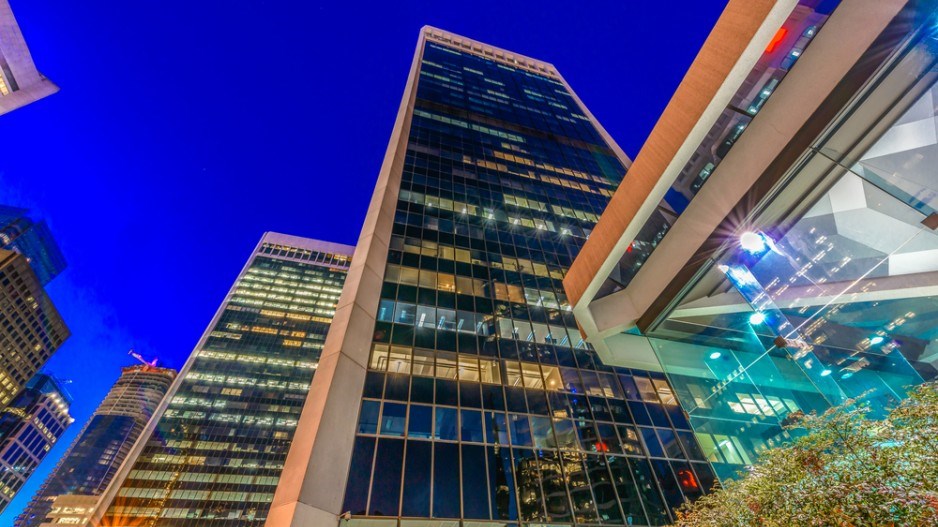What happened: Downtown Vancouver's office vacancy rate rose to 4.6% in the third quarter, up from 3.3% in the second quarter, according to CBRE Ltd.
Why it matters: Despite the increase in available office space, Vancouver is still home to the lowest, and one of the most competitive, vacancy rates in North America.
Demand for smaller office footprints as the COVID-19 pandemic rages on has pushed the city's overall office vacancy rate to 5.4% in the third quarter of this year.
It is the first time that rate has surpassed 5% since the end of 2018, according to CBRE Ltd. The rate is up from 4.6% the previous quarter, and 3.9% the year before. A balanced market would see vacancy at around 8%, said Jason Kiselbach, managing director of B.C. for CBRE.
In Vancouver's downtown core, the vacancy rate rose by 130 basis points quarter-over-quarter to 4.6%.
But despite an increase in direct and sublease vacancies, the downtown market retains the lowest office vacancy rate in North America, and remains one of the continent's most competitive markets.
"Through late spring and the summer, demand was down quite a bit. But we're starting to see new tours, new activity pick up as we hit fall, and a lot of it's driven by companies that had lease expiries," explained Kiselbach.
He said a portion of the subleases coming to market can be attributed to companies cutting down on leased office space as a result of COVID-19. He believes it remains to be seen how the work-from-home narrative plays out, and whether it will meaningfully result in depressed demand for office space.
"I think it is a bit of a transitionary period, and we're seeing that create a lack of urgency right now for people to make big decisions."
As office vacancies edge higher, Vancouver's available industrial supply tightened.
Supply and demand of available industrial space in the city returned to pre-COVID levels of activity, with demand outpacing supply. As a result, the city's rate of available industrial space compressed to 2.8% in the third quarter.
"Industrial and multi-family would be the two asset classes that I'd say have net benefited from all of this," Kiselbach said.
"Industrial specifically, we're still seeing historically strong levels of demand, especially for large format distribution space: accommodating e-commerce requirements or third-party logistics for retailers. Huge demand from companies that distribute food as well. The market is historically strong for industrial right now."
CBRE noted in its latest quarterly statistics release that Vancouver's development pipeline of industrial space remains active. Some 804,000 square feet of supply was delivered in the third quarter, 82% of which was pre-committed.
Another 1.7 million square feet is scheduled to be delivered by the end of the year, with 80% of the new supply already allotted.
In the third quarter, Vancouver posted 1.1 million square feet of positive net absorption, building on what is now a 28-quarter record run of uninterrupted industrial absorption.




